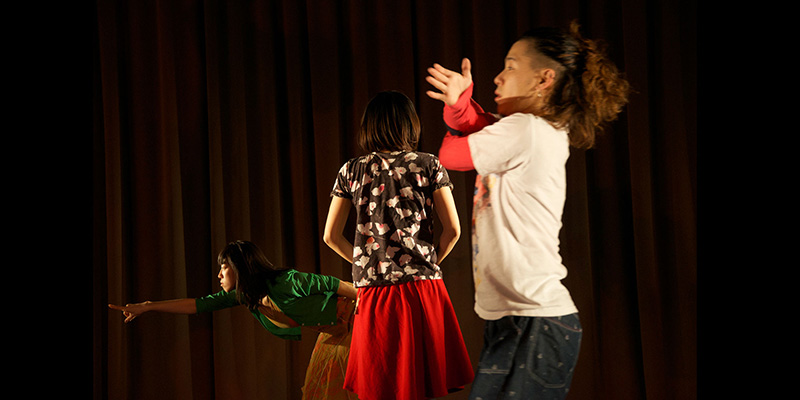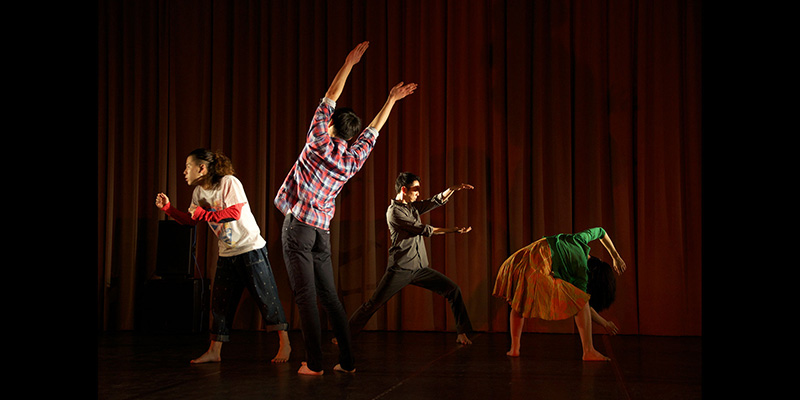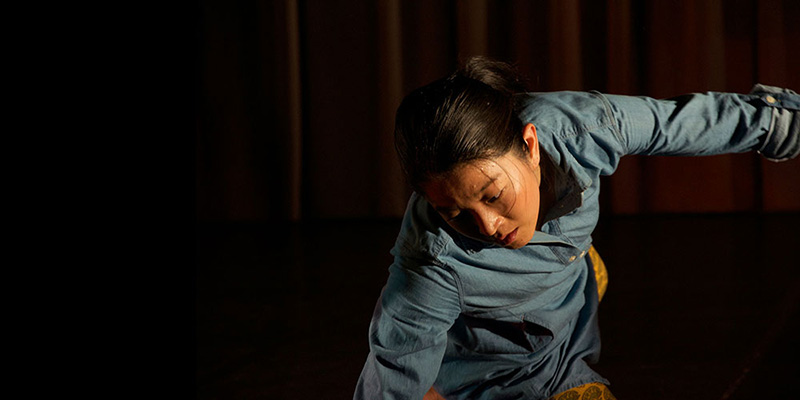


Junnosuke Tada first directed Re/Play in 2011 with his theater group, Tokyo Deathlock. It explores the intent and meaning of re-production through bodily repetition of physical movement. As a re-making of a theatrical production, this version replaces the actors with eight Singaporean and Japanese leading contemporary dancer-choreographers.
Using pop music, the performers dance until they collapse in exhaustion – and then they get up and do it again, each choreographer-dancer taking a turn at their own approach to the project. In their collaboration with Tada’s direction, the very foundation and meaning of dance is undermined, theater as a format is subverted, and a truly fresh perspective on dance and performance emerges.
This is the first international collaboration in co-production with TheatreWorks/72-13 and Offsite Dance Project. The collaboration between Japan and Southeast Asian artists will be continued in Asian countries.


The 2011 great earthquake of northeastern Japan became the underpinning of “Re/Play,” a piece that was created by my theater company, Tokyo Deathlock. Based on themes such as “unrepeatable” and “interruption,” actors continued their movements without interference from each other. This resulted in the destruction of images created by pop music to create a work that expressed time and life ironically through relentless repetition. In the following year, 2012, a version of the piece was made with eight dancers in Kyoto. Actors mostly represent humans on stage – you could basically say theater is an expression of humanity. On the other hand, a dancer’s material is the body itself, so they express a range of things from concrete to abstract. I asked the dancers to work with the concept of “dance/not dance,” creating a gradation between “not dancing = human” and “dancing = body” in order to create chaos with the increasing varieties of physicality. From this confusion arose a truer expression of the world. In 2014, a different group of dancers recreated the piece in Yokohama. Through juxtaposing their widely varying physiques, perspectives on dance, and choreography, the performance destroyed the framework for the audience’s perception by rebuilding discovery through confusion in disruption. I again recognized that the more variation there were in dancers, the more impact the piece would have. I am looking forward to being able to see this scenario with Japanese and Southeast Asian physicality — the Asian physicality — in the next creation in Singapore. Each dancer will make their own performance based on their own “dance/not dance” and “movement/choreography.” I will not be giving any direction concerning choreography. My role will be to direct the structure by which the dances created by each individual dancer coexist with each other. I hope that it will be a place that the participating dancers as well as the audience will be able to rethink, investigate, and develop their perspective on dance.
Offsite Dance Project
Address:
10-1-202 Ikebukuro, Naka-ku, Yokohama, Japan 231-0834
E-mail: info@offsite-dance.jp
URL: http://www.offsite-dance.jp